Local rock art hunter Bob Pankhurst has spent a lot of time recording and photographing these two very unusual large figures at the Mooney Mooney Aboriginal Area. All images & text on this page are courtesy of Bob Pankhust.
Large ancestral hero. 730 cm. x 230 cm. This carving is very faint. The lines can be seen in the water which I have poured on the rock. This view is to West.
Carving no. 15 is carved through this carving and no. 16 is located at the top right in this photo.
There are two large extensions with circles on the end of them coming from his neck and a third coming from the top of the head. He has short arms, a long body with a belt, two short legs and what may be an enormous penis extending from his left side. A second smaller figure is to his left. This figure has a large extension with a circle on it coming from its head, two outstretched arms, a long body with a belt and a bulge on the left side of the body and a smaller bulge on the right side. This carving has dots for fingers on the left hand. The legs of both carvings are very hard to see as they have been eroded by the watercourse over the rocks. These two carvings are much older than any others on this rock as a large kangaroo (No. 16) has been drawn over them. Both carvings are aligned with the heads to East. A large circle is drawn between them above their heads, this could be connected to the head of the largest carving but the lines are indistinct.
No 14. Ancestral Hero. It is very hard to photograph these very large and extremely faint carvings from ground level without some form of highlighting.
The largest man viewed to south east. The large penis can be seen in this outlined drawing. The right hand side (smaller) carving may be a female. An unfinished or eroded carving with a similar type headpiece was recorded by W.D. Campbell at Cowan in 1899. I don’t know whether the Cowan carving exists today as he noted it was weathered away in 1899.
The two carvings together viewed to North West. The left hand carving in this photo has eroded around the lower leg area and the kangaroo No 16 has been carved over it at a much later date.
The head and shoulders of the smaller carving.
This is an entry from “The Aboriginal carvings of Port Jackson and Broken Bay” by William Dugald Campbell printed and published in 1899 by the Government printer. It is an extremely rare book.
The carving was located in the Cowan area. These carvings may have been carved by a completely different Aboriginal people who inhabited this area at a much earlier time than the people who did the more modern carvings drawn over them.
These carvings are unlike any others in this area, some cave paintings in the Northern Territory show a similar though not so large head dress on the men. Viewed to west.
No.15. The head in detail of the right hand (smaller) carving. The fingers can be seen on both hands and the eyes and elaborate headdress. The arm of the larger carving can be seen and part of the headdress.
Viewed to east. This carving measures 530 cm. x 200 cm.
The body of the smaller carving showing the bulge on the right side with a smaller bulge on the left side.
This photo shows some of the elaborate head dress on the left hand man.
The body and part of the lower legs on the largest man.
The body of the right hand carving showing the legs and the belt more clearly. Part of the kangaroo no. 16 can be seen at the bottom left in this photo.
Carving no.16. This carving is drawn over the very large heroes.
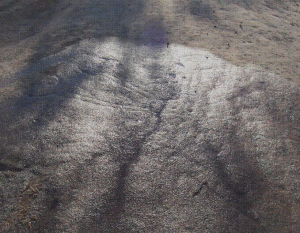
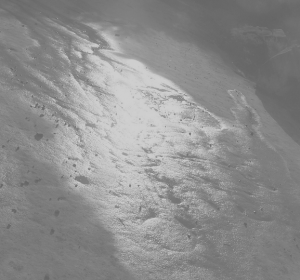
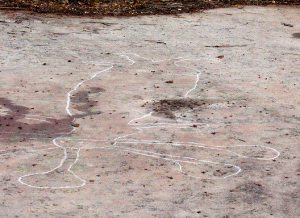
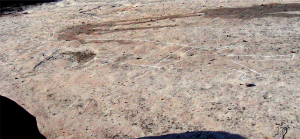
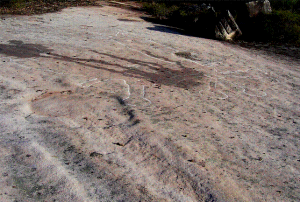
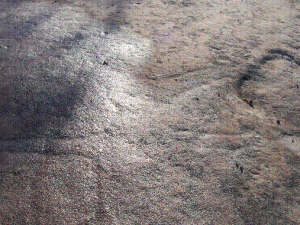
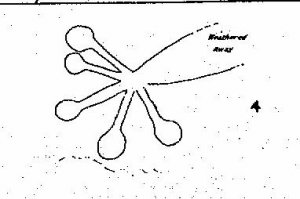
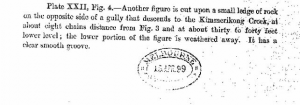
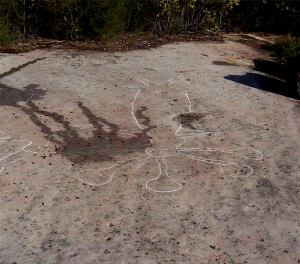
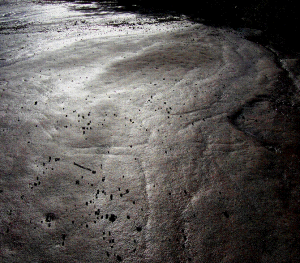
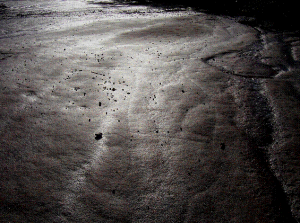

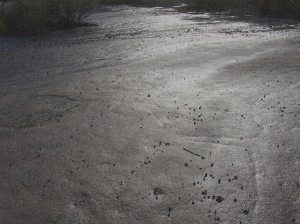
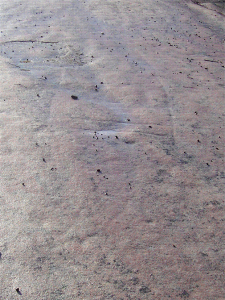
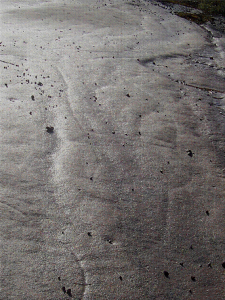
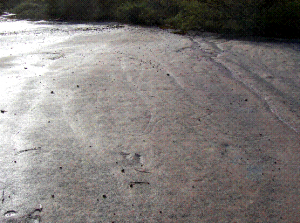
Hello Bob, I’m researching the engravings with intention of publishing next year. Have you got any theories on the meaning of certain engravings. I’ve got Queen Gooseberry’s statement regarding ‘places where the dibble(devil) walks about” and Campbell’s reference of an Aboriginal woman camped at La Perouse that a whale engraving was a ‘Bora’ ground but thats all. The rest is speculative and I’m trying to put meat on those bones of the speculations. I think the engravings served many purposes such as ceremony, catalogues of information, directional indicators, records of events and considering astronomic charts and diagrams. I know that the engravings are linked and interconnected but I really don’t know why. Anyway I’m rambling now. I’d welcome your thoughts. Thanks Bob, Ian Jacobs